January 25th, 2022
8minute read
U-234 was on a mysterious mission.
It was the first, and last mission that the U-234 would ever undertake.
By this point in the war, Allied anti-submarine measures had become quite effective.

Under U.S. Navy escort, the U-234 on its way to captivity. The American sailors did not know how valuable the prize was that they had captured. Image: NARA
Speed was restricted to six knots, however, to prevent damage to the snorkel tube.
In Germany, the Reich was collapsing, and the Kriegsmarines primary transmitters went off the air.
On May 10th, Fehler surfaced and received Admiral Donitzs order that all U-boats must surrender to Allied forces.
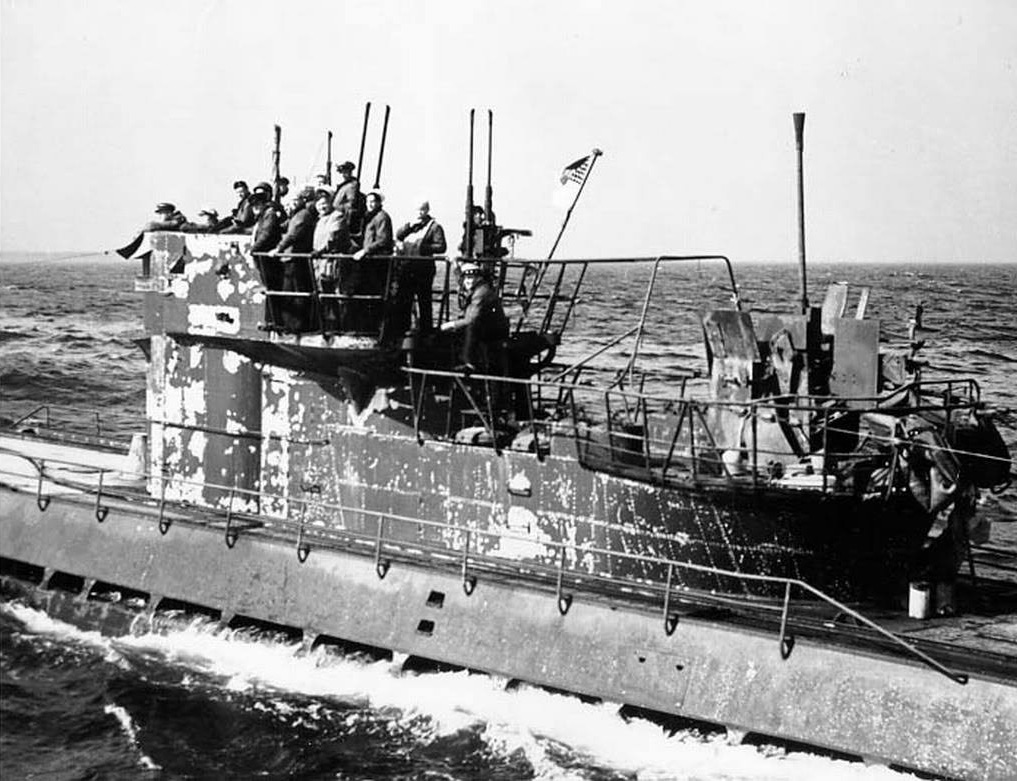
The U-234 with a prize crew from the USS Sutton (DE-771) aboard, headed for Portsmouth, New Hampshire. Image: NARA
Even so, Fehler did not believe this transmission was legitimate and sought verification.
He found this when he was able to contact another U-boat that confirmed Germany had surrendered.
Many of these came from England and Canada during the long U-boat offensive.
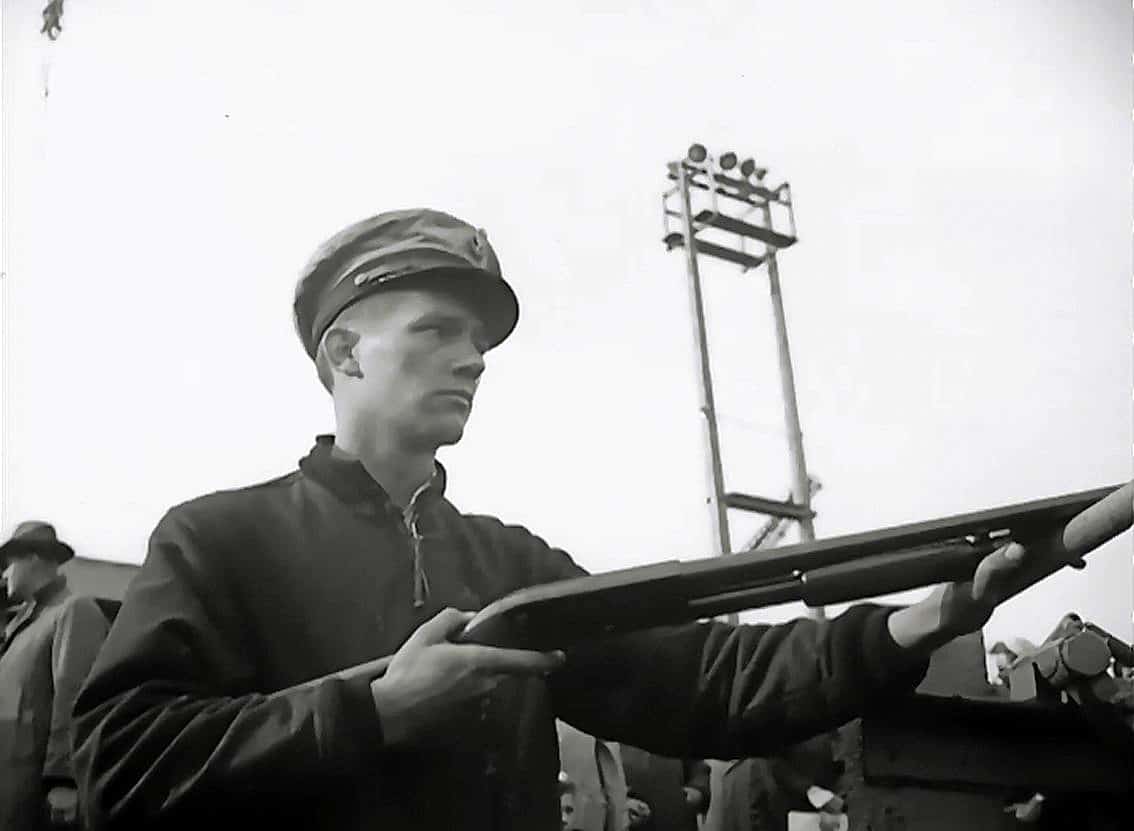
A Coast Guardsman watches over captured U-boatmen with a Model 37 12-gauge shotgun. Image: NARA
Fehler discussed surrender with his crew.
Some men favored a return to Germany.
Others suggested a trip to neutral Argentina.
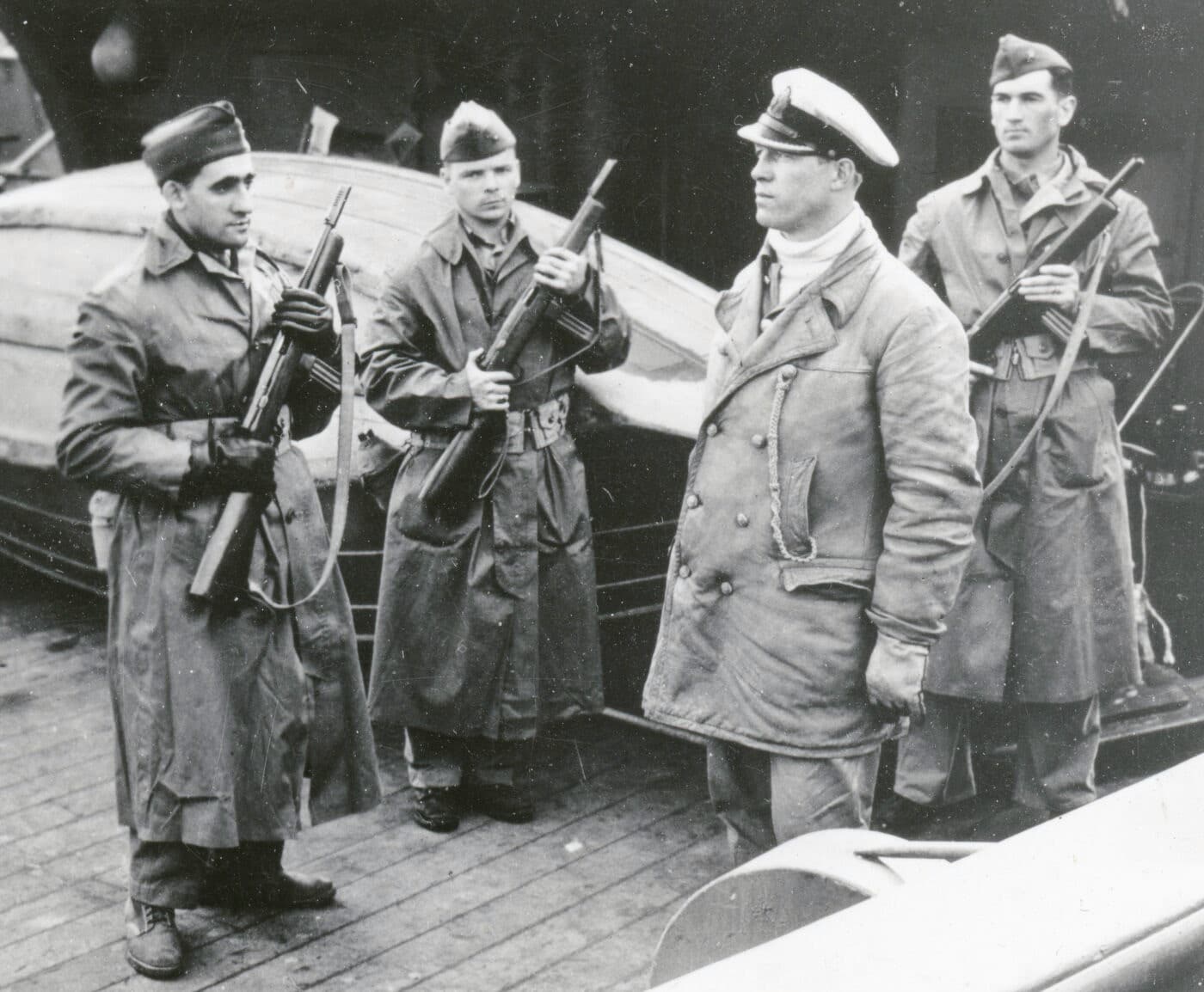
In Portsmouth, New Hampshire, USMC guards armed with Reising Model 50 SMGs look after U-234’s Captain Fehler. Image: Author’s collection
One of those men was Lt. Karl Ernst Pfaff, who was engaged to Fehlers sister-in-law.
Ultimately, Fehler opted to go to America where he reckoned that his crew would receive the best treatment.
Consequently, he ordered the sub to sail to Newport News, Virginia.
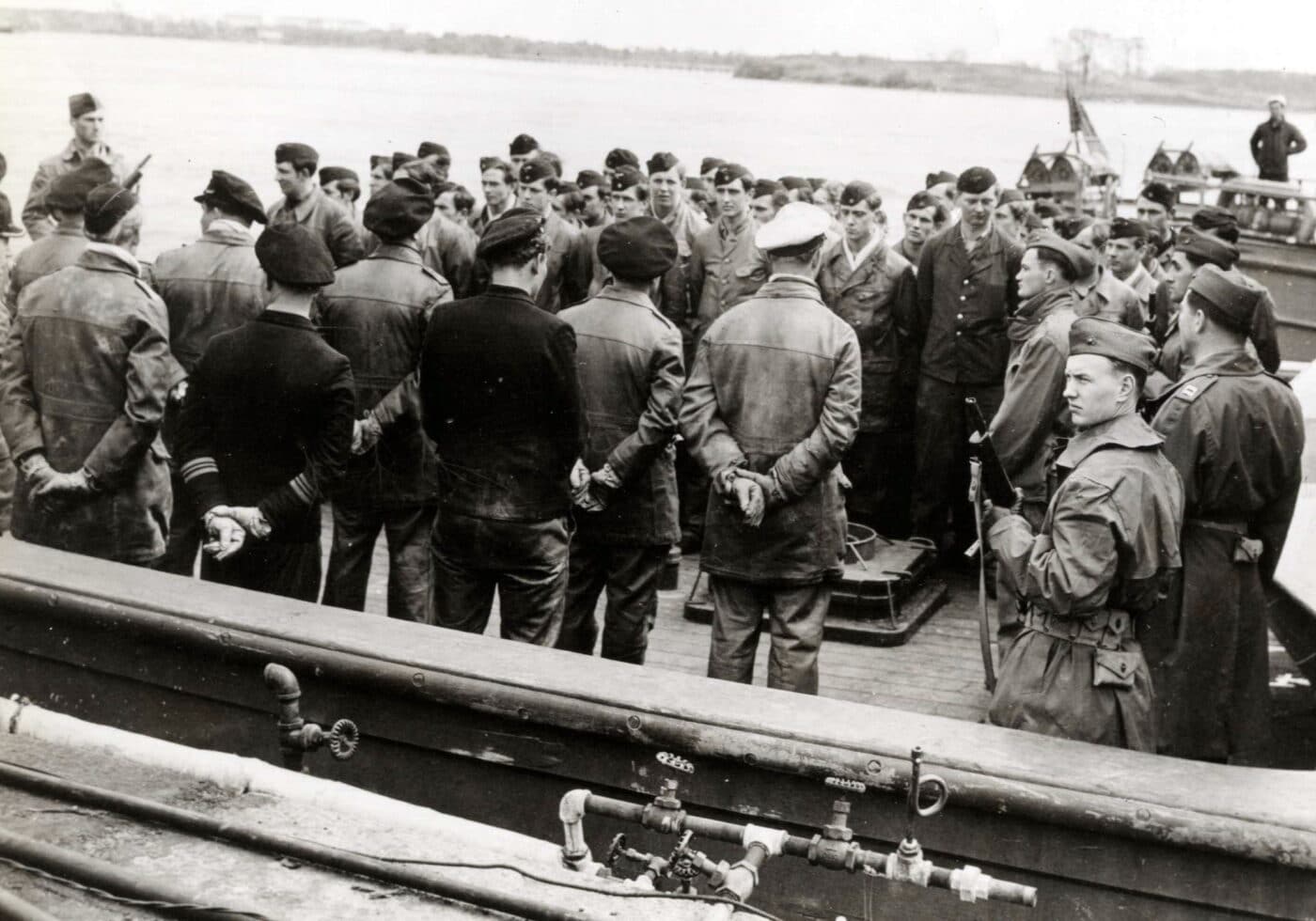
U.S. Marines armed with Reising Model 50 SMGs watch over U-234’s German crew in Portsmouth. Image: NARA
Some important housekeeping duties immediately presented themselves.
Among U-234s twelve passengers were two Imperial Japanese Navy officers, Lt.
Commander Hideo Tomonaga, a naval architect and sub designer, and Lt.
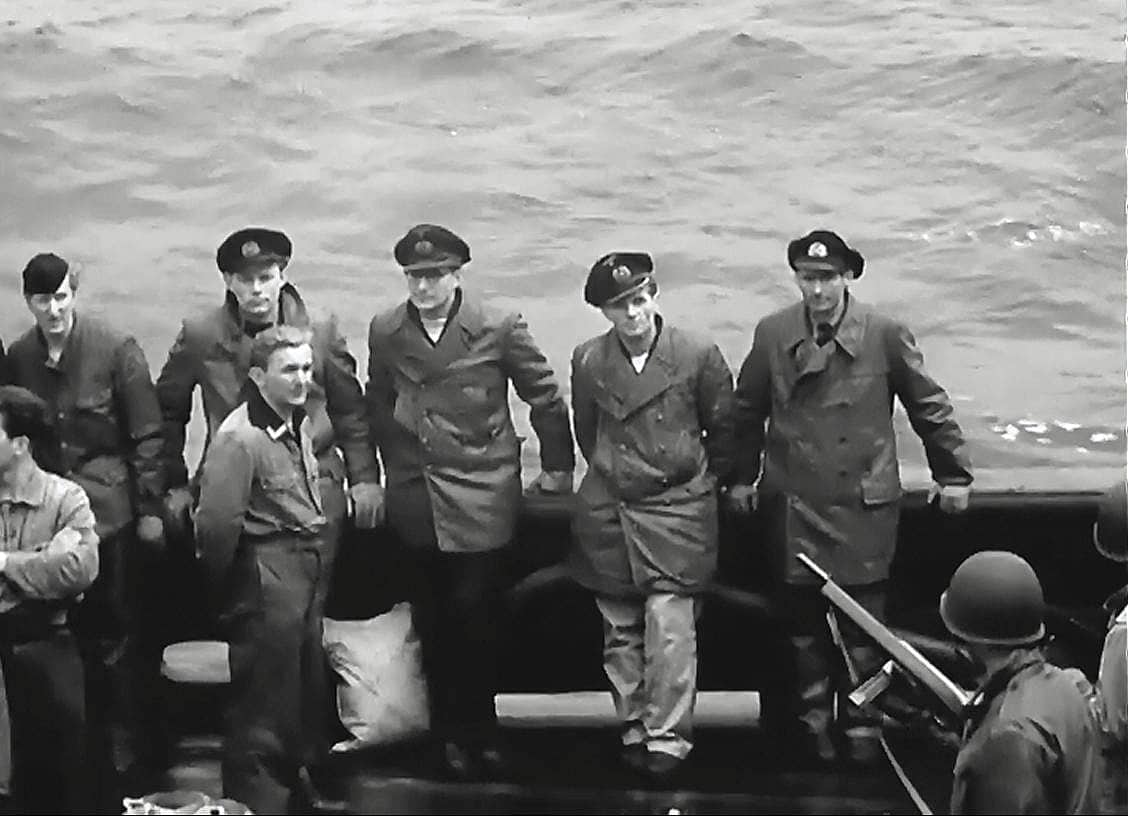
U.S. Coast Guardsmen cover captured U-boat crewmen on their way to Portsmouth, New Hampshire. Image: NARA
Commander Shoji Genzo, an aviation expert.
After hearing this news, the Japanese officers committed suicide with an overdose of Luminal, a powerful sedative.
Apparently, it was a painful death, and it took the Japanese 36 hours to die.
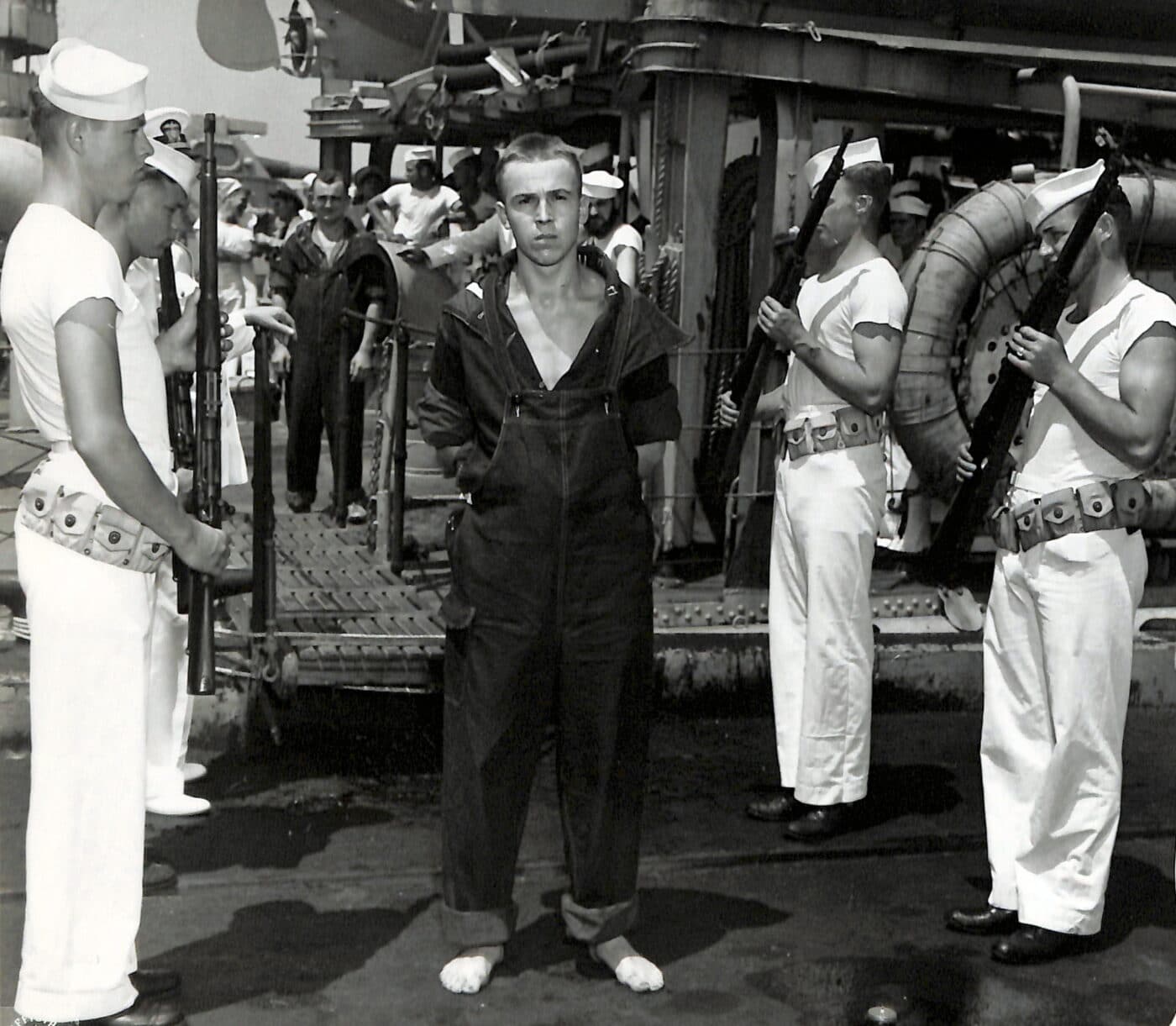
U.S. Coast Guardsmen with Springfield M1903 rifles cover U-boatmen captured at sea. Image: NARA
The crew then buried them at sea.
Capture by the USS Sutton
The war diary of the USS Sutton (DE-771), Lt. Mazro commanding, details the next stage of U-234s journey.
At 2141 overtook the target and identified her as U-234.

The M1903 rifle greets Luftwaffe General Ulrich Kessler as he arrives in Allied captivity at Portsmouth, New Hampshire on May 19, 1945. Image: NARA
Changed her course to 250 and escorted her for the rest of the night at eight knots.
Their bodies had been disposed of prior to capture.
Some even chartered a small boat to go to sea and watch them come in under guard.
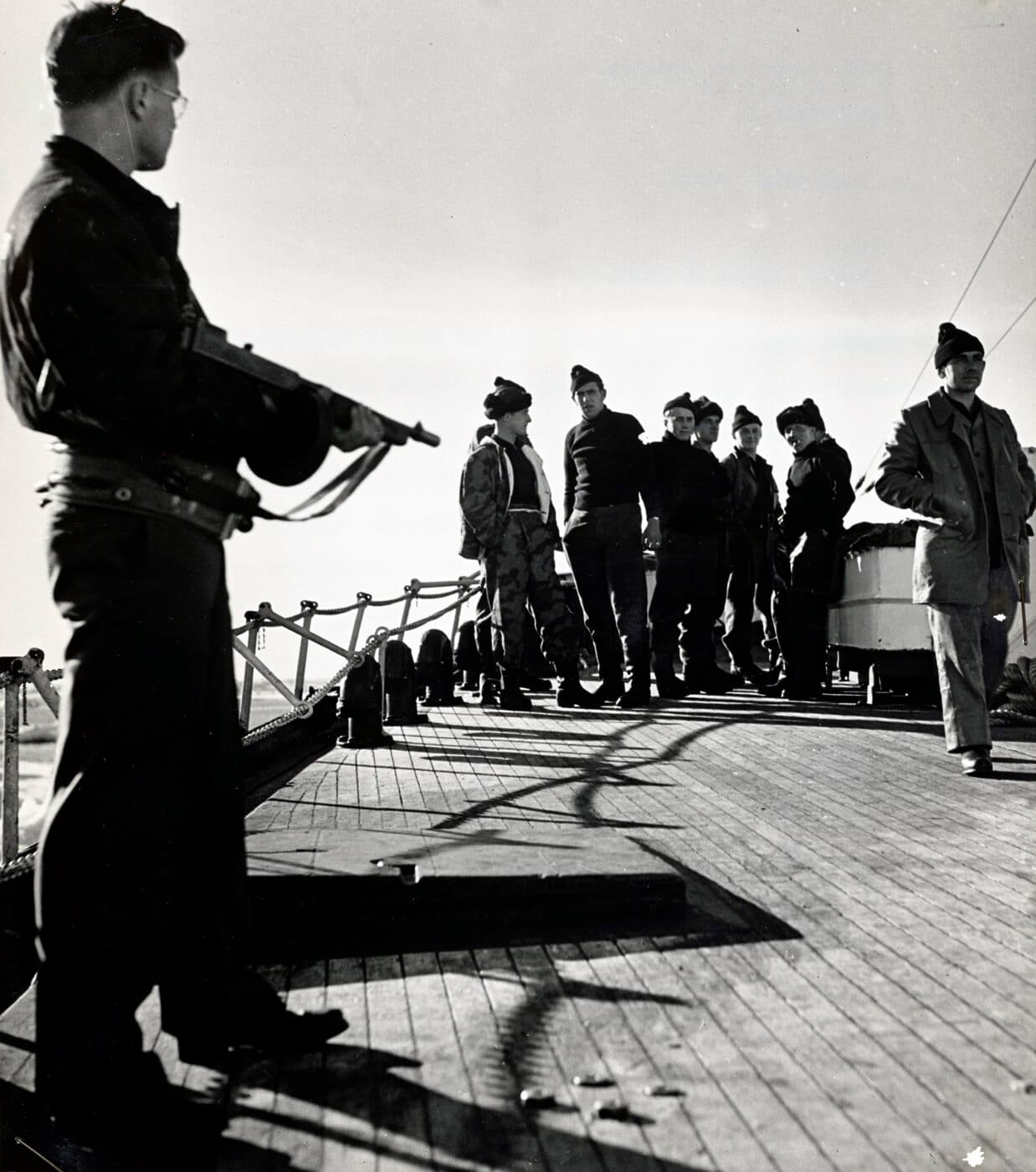
U.S. Coast Guardsman covers U-boatmen with an M1928 Thompson SMG equipped with a 50-round drum magazine. Image: NARA
Inside the subs mine shafts they also found 50 nine-inch-long lead cubes, each marked U-235.
Most of the original investigators would never know that this was Uranium Oxide.
Many of U-234s officers were taken to Quantico, Virginia for interrogation.
Pfaff told his captors: Why would these boxes be booby trapped?
They were on their way to our ally Japan.
Why would we want to blow them up?
Pfaff was told that it was Oppenheimer, but he had no idea who the American nuclear physicist was.
But there was no mention of uranium.
After processing, it would have yielded about 20% of what was required to arm an atomic bomb.
While they captured and guarded the German U-Boat crews, they had all the firepower they needed.
Commonly found among the Navy men and Marine guards was the .45 caliber M1911 pistol.
The biggest drawback with the Reising was its small magazine capacity topping out at just twenty rounds.
The Navy and Coast Guard made good use of thevenerable M1903 Springfield riflethroughout the war.
All were used for impromptu skeet shooting and occasional bird hunting as the opportunities presented themselves.




